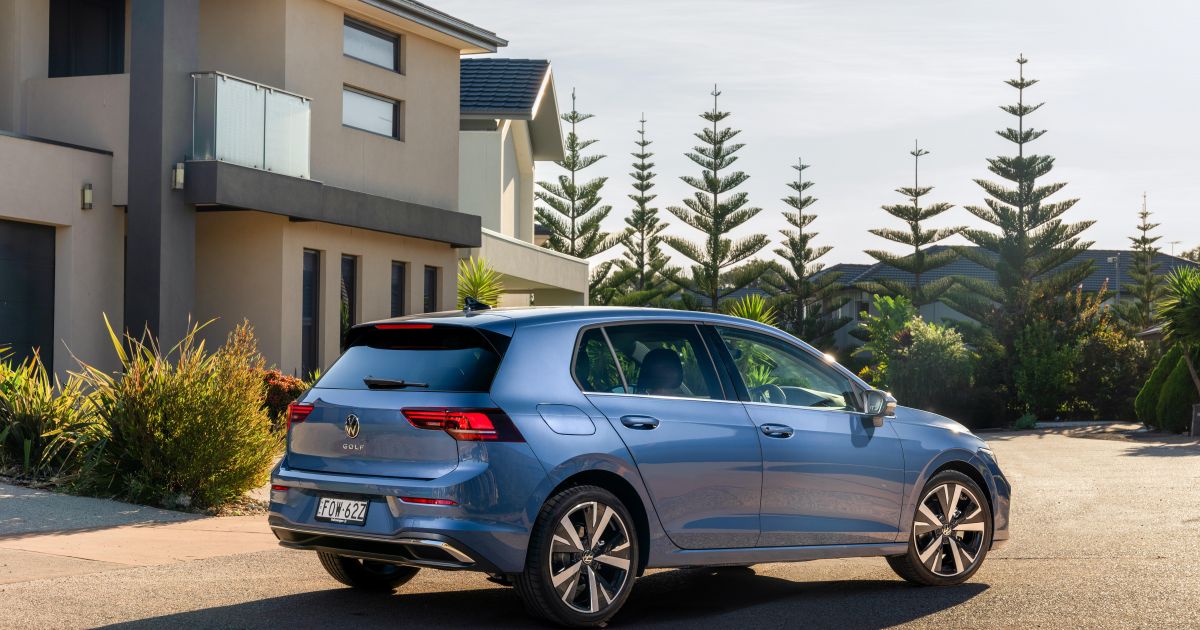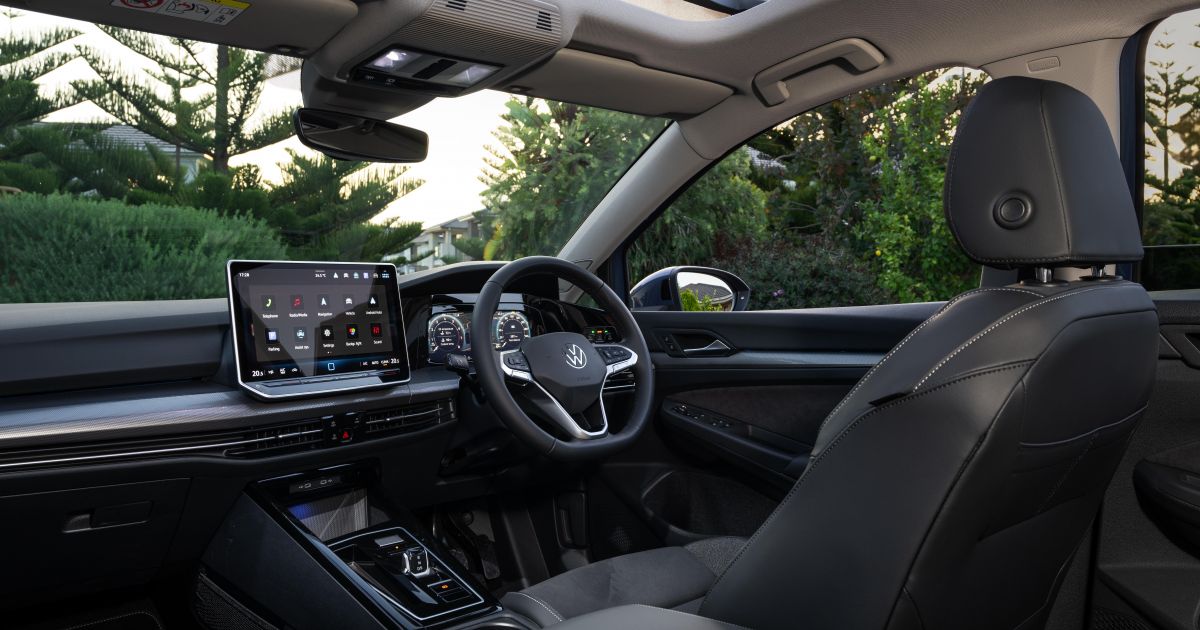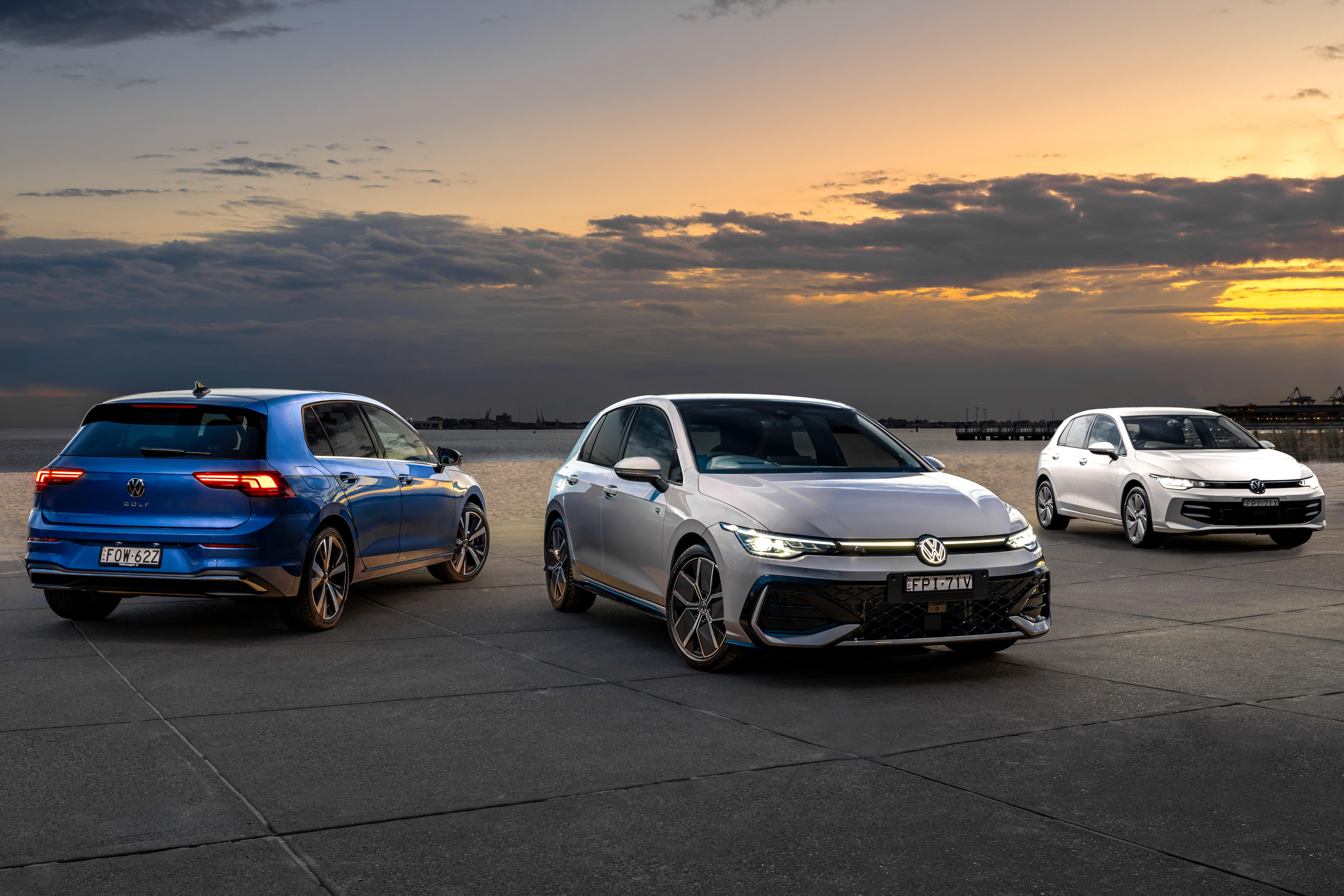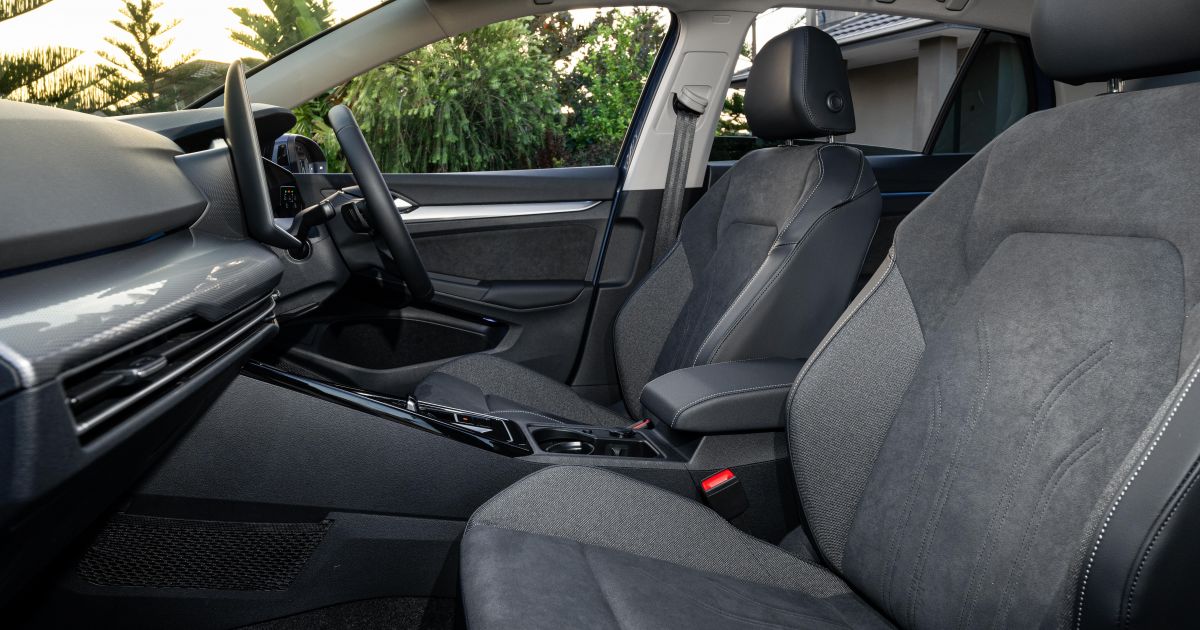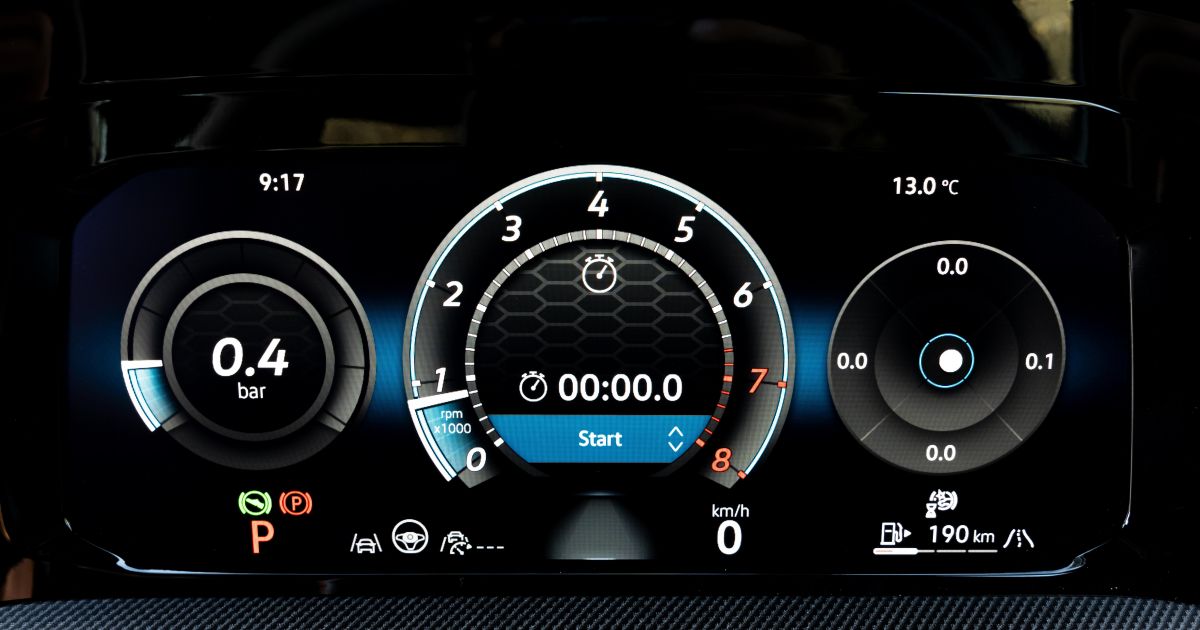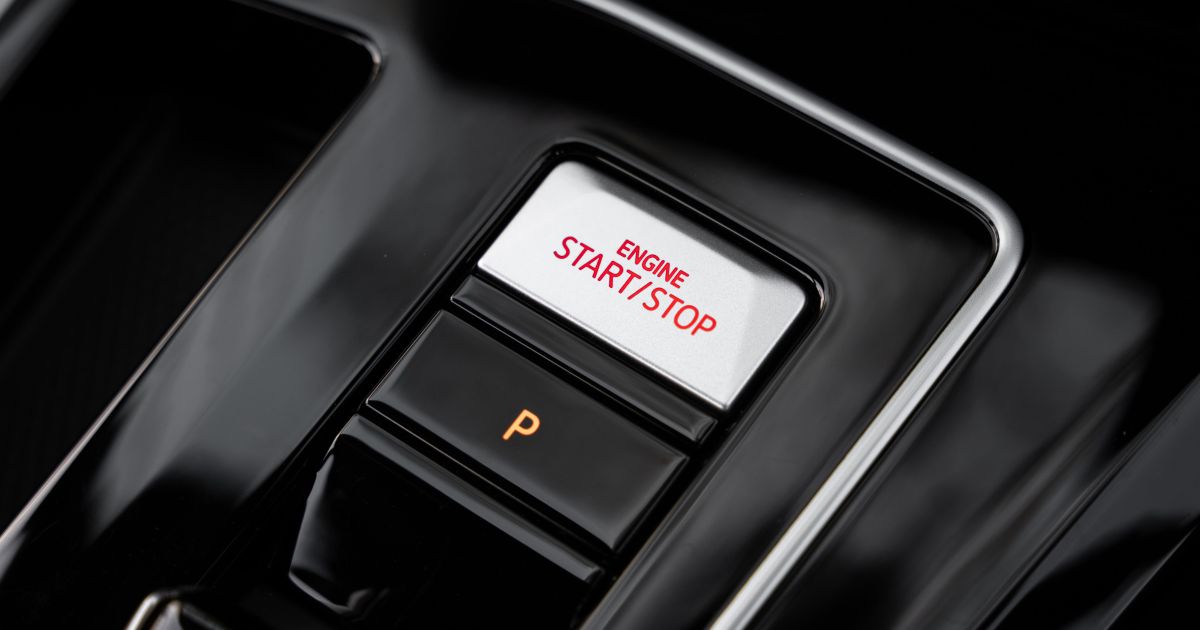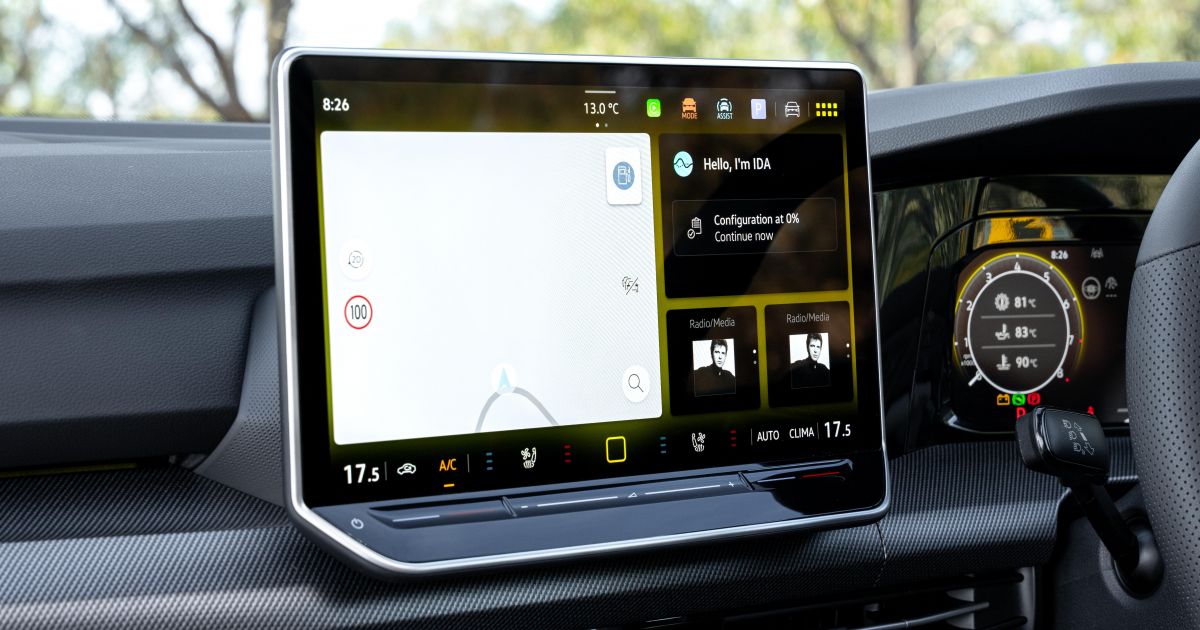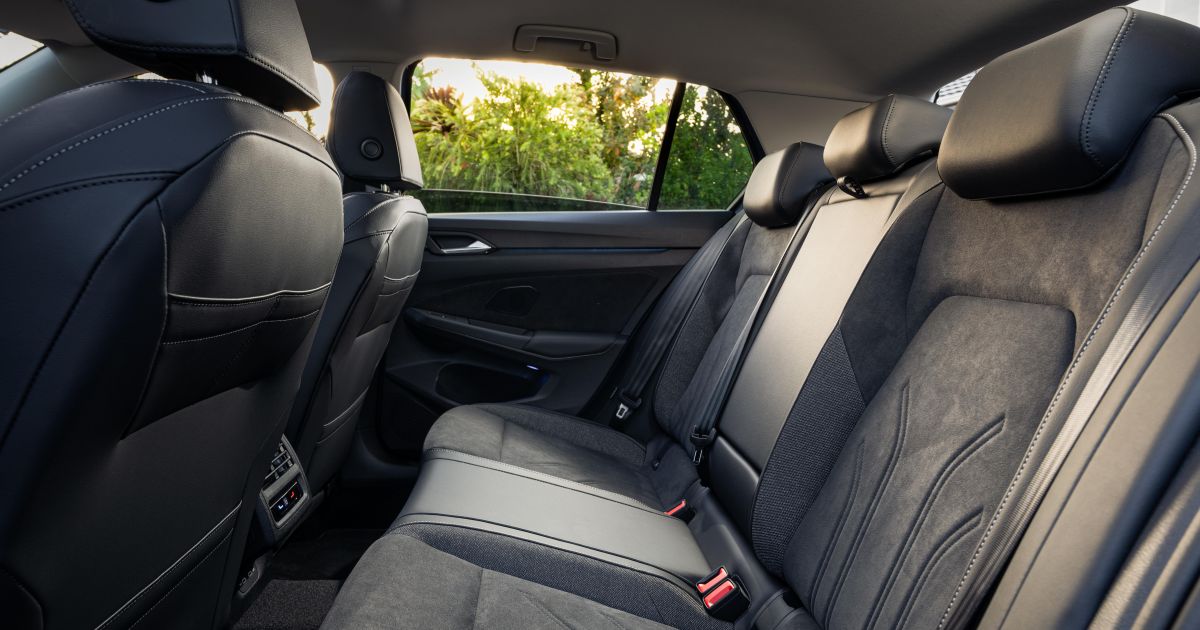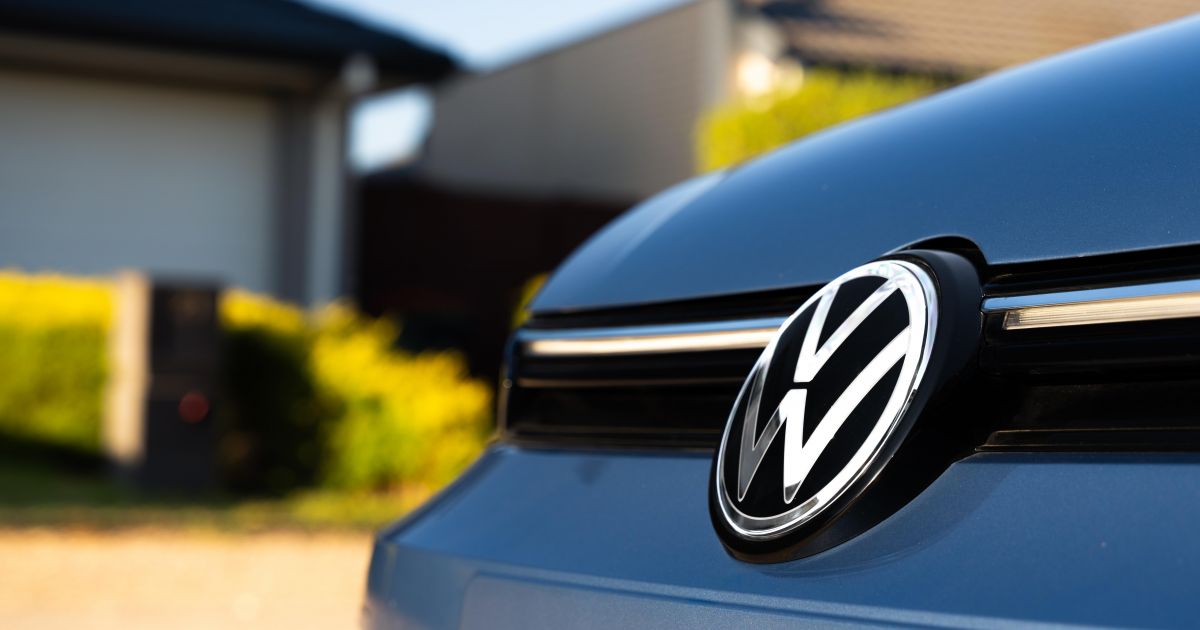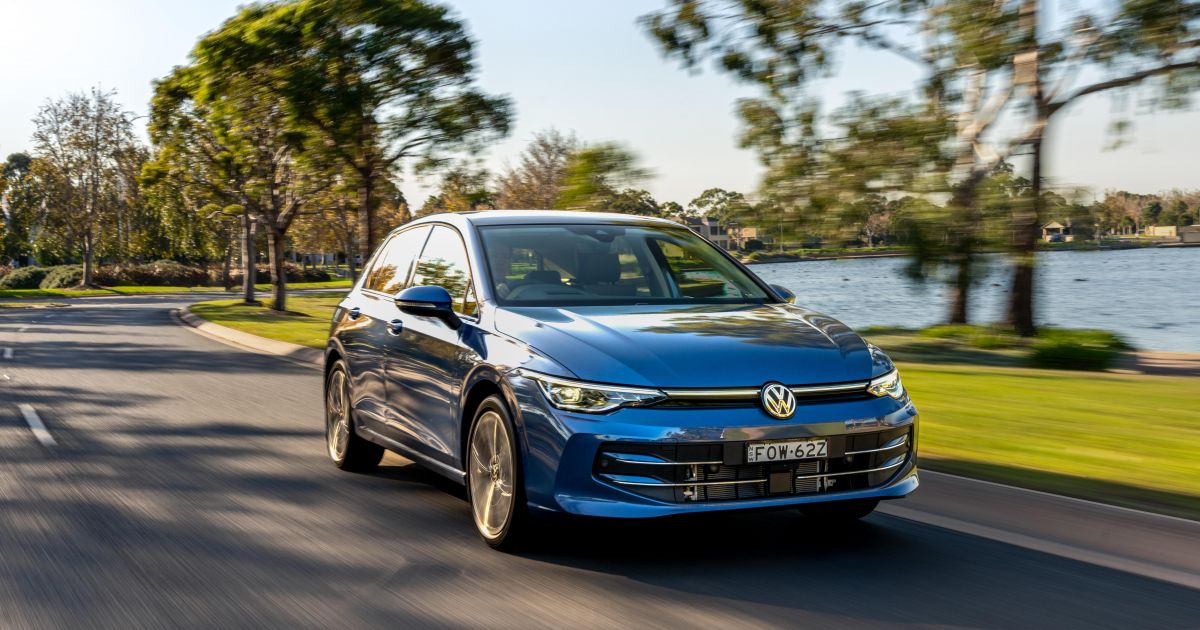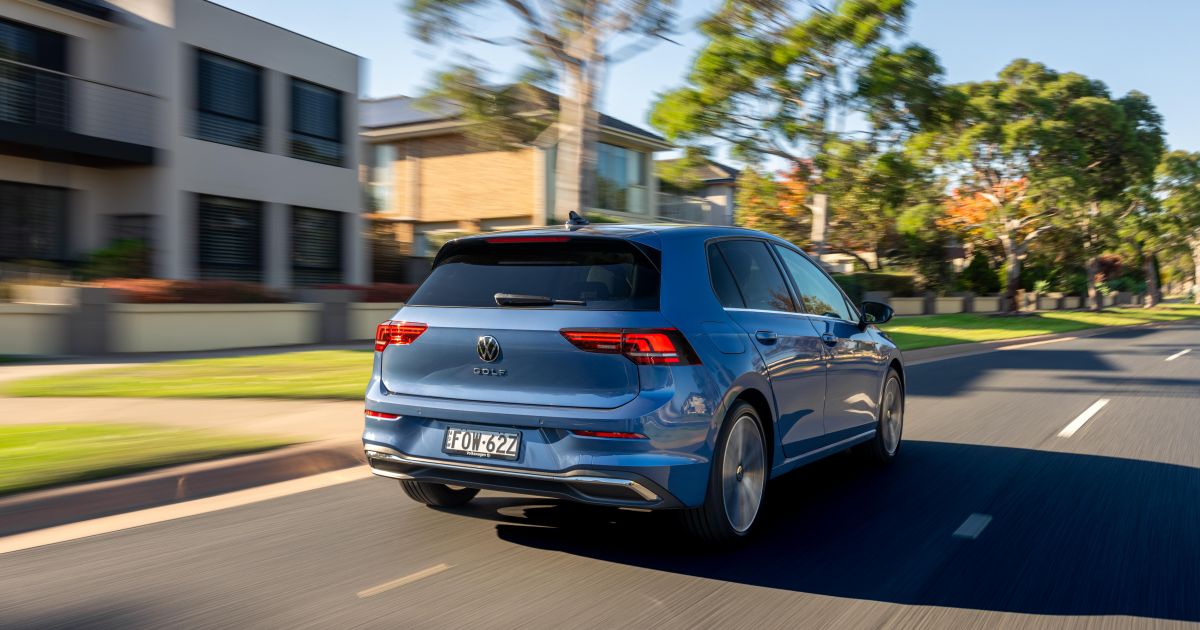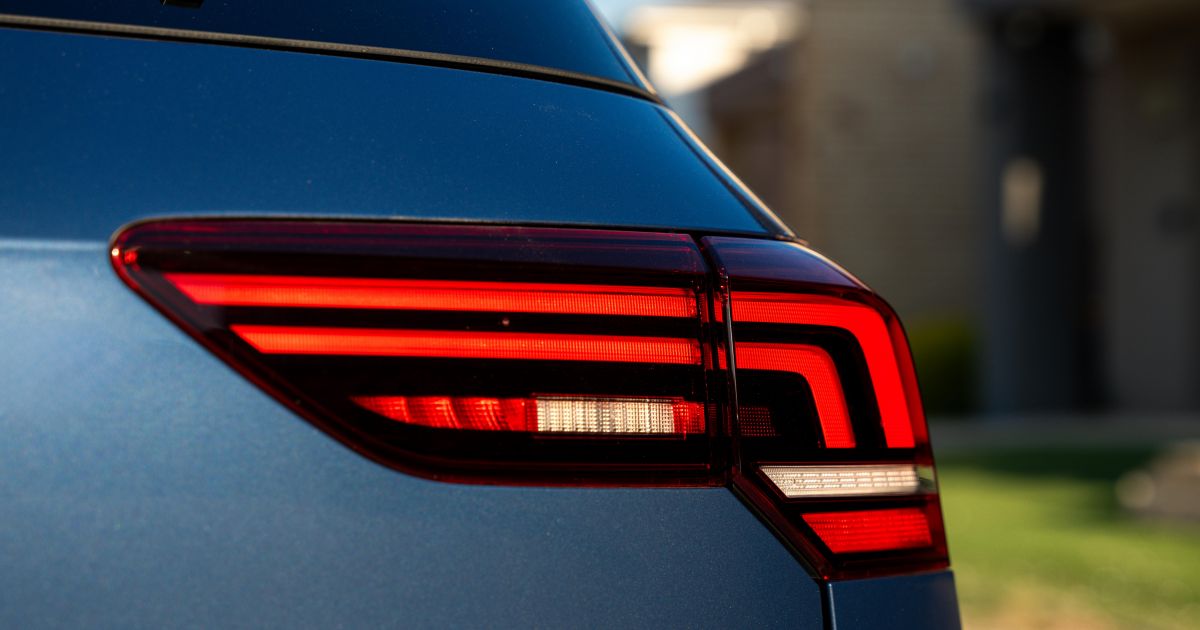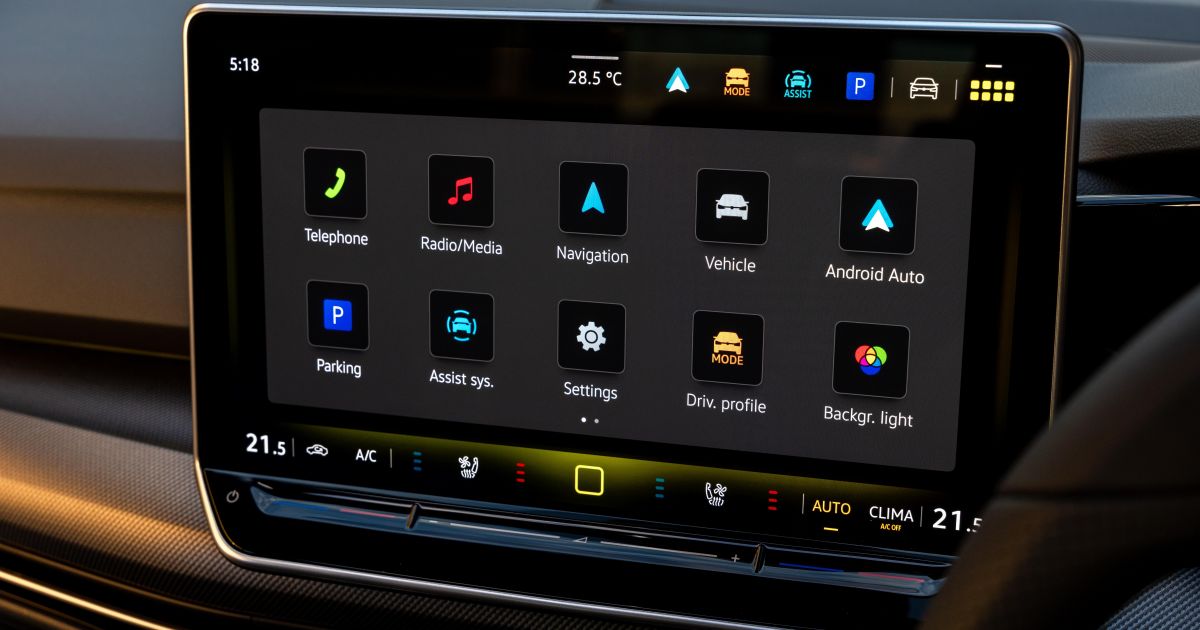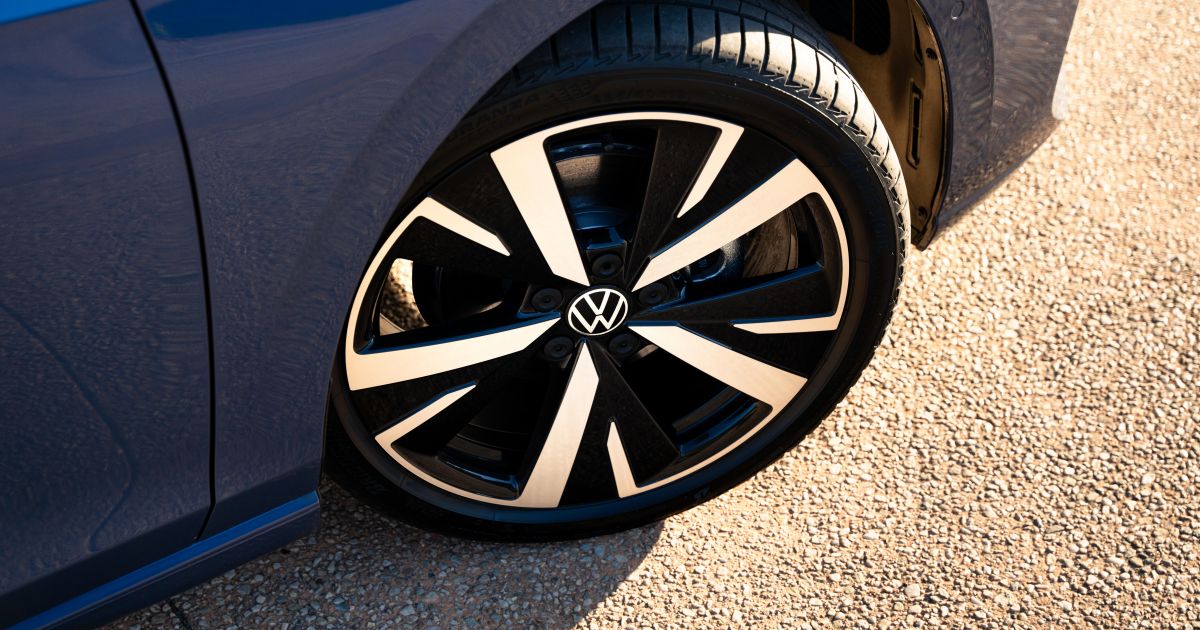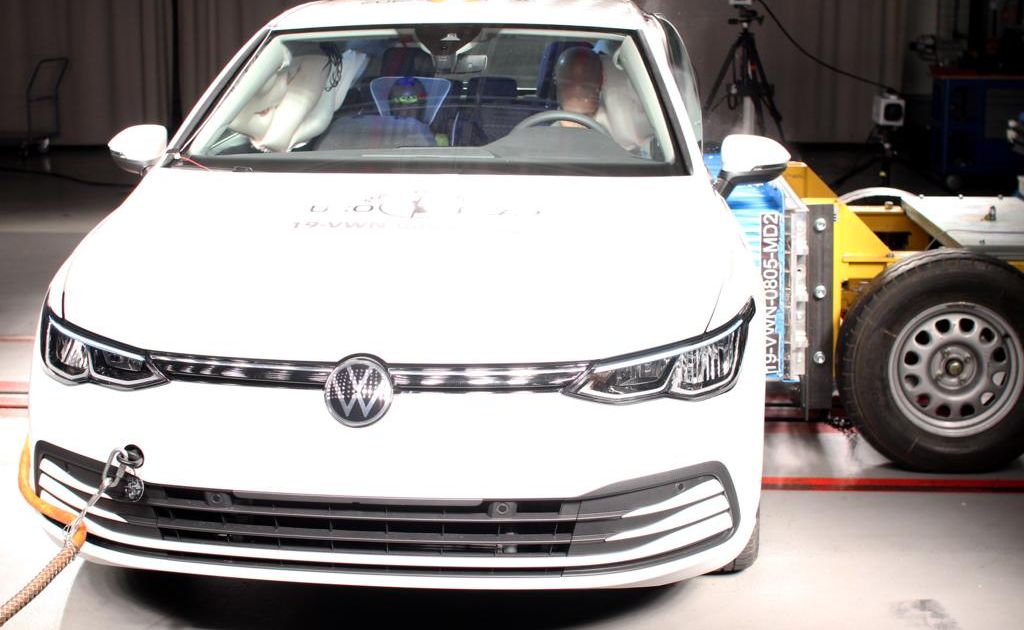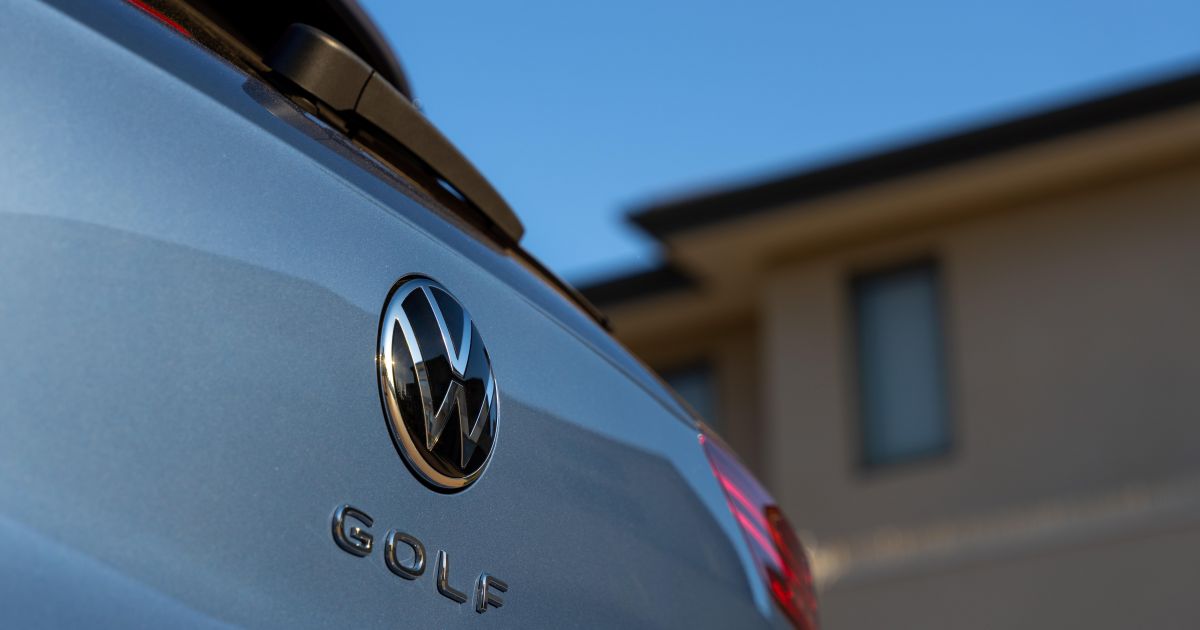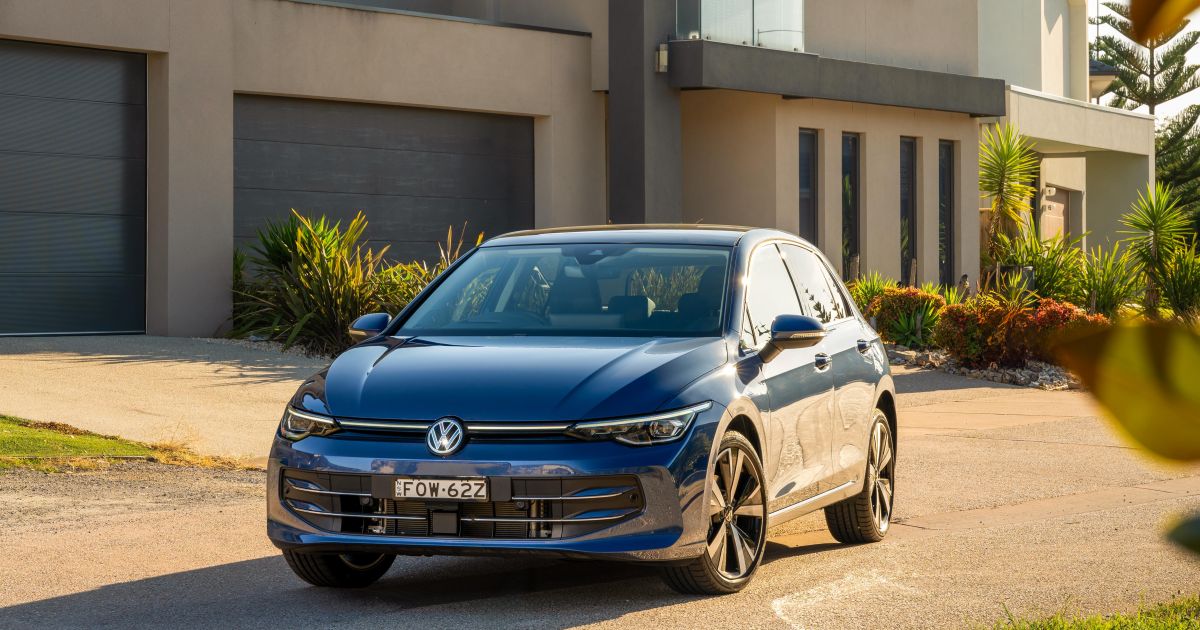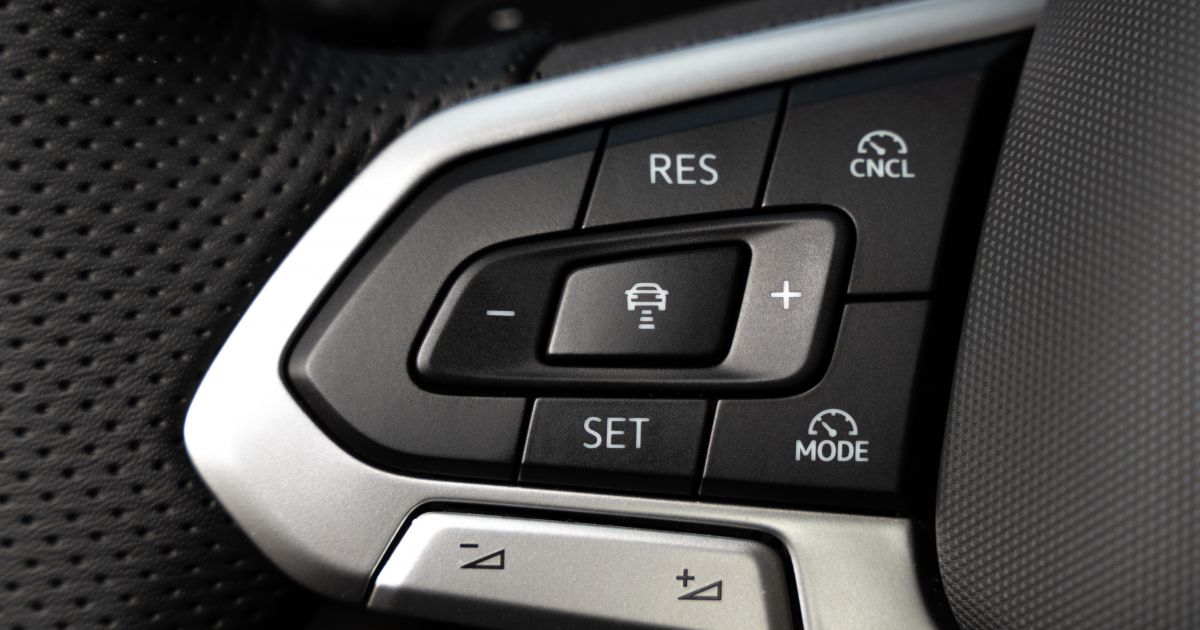The eighth-generation Volkswagen Golf has been an interesting chapter in the iconic German nameplate’s storied history. It’s been regarded more as a ‘par’ than a ‘birdie’ or ‘hole in one’ – forgive the pun.
After a stunning run with the Mk5, Mk6 and Mk7 generations, the Golf Mk8 was a pretty big departure from its predecessors in that it was almost a revolution of the formula rather than a subtle evolution, as is more customary.
Sure, the exterior design didn’t really rewrite history, but the approach to interior minimalism and the sheer amount of tech on offer was meant to really bring the Golf into a new echelon.
Instead it’s been more of a learning exercise, with news headlines including software issues, quality concerns and higher pricing – the latter especially so in Australia – and so the modern ‘people’s car’ is no longer the common sight on local roads it once was.
There’s no question that its refined on-road manners and turbocharged performance are still strong points, courtesy of that revised MQB evo platform, but the Mk8 never quite resonated with buyers Down Under or around the world like the Mk7 did – in fact, it lost its top spot on the European sales charts for the first time in 17 years.
Enter the upgraded 2025 Volkswagen Golf 8.5, a mid-life refresh of the eighth-gen hatchback (and wagon abroad) that aims to address complaints about the Mk8 – more user-friendly tech, improved ergonomics, and more tech headline the changes, as well as a greater focus on value for the Australian lineup.
Key to the revised Golf range is the new Style variant we have on test here, pitched as something of an affordable luxury hatch that succeeds the plusher Highline variants offered previously. Is it the new pick of the range?
How much does the Volkswagen Golf cost?
The 2025 Volkswagen Golf Style sits between the entry-level Life and mid-range R-Line, priced from $43,690 before on-road costs.
| Model | Price before on-road costs |
|---|---|
| 2025 Volkswagen Golf Life | $38,690 (-$500) |
| 2025 Volkswagen Golf Style | $43,690 (NEW) |
| 2025 Volkswagen Golf R-Line | $47,990 (+$5500) |
| 2025 Volkswagen Golf GTI | $58,990 (+$2900) |
| 2025 Volkswagen Golf R | $70,990 (+$400) |
| 2025 Volkswagen Golf R Black Edition | $72,490 (NEW) |
To see how the Volkswagen Golf lines up against the competition, check out our comparison tool
What is the Volkswagen Golf like on the inside?
Subtle, but meaningful changes have been made inside the cabin of the Golf.
The new Style variant brings swish ArtVelours microfleece-lined ‘Comfort sport’ seats, which offer a massaging function and electric adjustment for the driver – as well as an extendable under-thigh cushion!
While they may not look as extravagant as the R-Line’s sportier front buckets with integrated head restraints, the supple suede upholstery and wonderfully supportive cushions make for a very, very comfortable driver’s perch.
Both front seats are heated also, though they miss out on the ventilation function of the R-Line’s perforated leather-clad sports buckets. The Style also adds gloss black trim on the centre console, which while fingerprint- and scratch-prone, is a lot dressier than the austere matte grey plastic trim seen in the base car.
VW has brought back hard buttons as the norm on the Golf’s steering wheel, for all but the flagship R performance hero, and it’s all the better for it. While we still miss the chunky action of VW’s switchgear on the dashboard, the multifunction steering wheel controls are clear and easy to use, with a satisfyingly solid action when pressed.
The option to add a beefy eight-speaker, 12-channel Harman Kardon premium sound system is worthwhile, which is bundled with a handy projector-type head-up display and surround cameras – which could have better resolution, in my view. At least the optional sound system slaps, as the kids say.
While some of the subbed-in trimmings go a good way to making the Style less Trendline and more Highline, there haven’t been any wholesale changes like in the related Cupra Leon, for example, which will receive new padded and leather-lined surfaces along its centre console for a more premium ambience.
Still, the Golf’s clean and screen-heavy ambience feels more contemporary and upmarket than a lot of rival vehicles in this class – think Toyota Corolla and Hyundai i30 – though it doesn’t have the outright tactility and class of, say, a Mazda 3.
The 10.25-inch Digital Cockpit Pro driver’s instrument cluster has seen some minor revisions, yet maintains a crisp readout with good configurability that’s only really bettered by the Volkswagen Group’s premium Audi brand. My only gripe was the inability to have the gear and speed magnified within the dials like with displays past – but this could be a user issue, rather than the tools.
Similarly, the 12.9-inch central touchscreen gets the latest interface in line with the brand’s ID electric models, and the IDA voice assistant is integrated, if without the full net-connected and AI-powered functionality of overseas models. It’s a wonderfully clear and snappy display, bringing the look and feel of the flagship Touareg to the compact class.
The wireless Apple CarPlay generally worked without fault when paired with my iPhone 16 Pro Max, though I have experienced the odd dropout when passing under one of Victoria’s toll booths in other models with this system.
Previous gripes around the touch sliders for temperature and volume have been somewhat addressed with illumination, which helps with useability in low-light situations while also looking more sophisticated, while the hard toolbar at the base of the screen makes it easier to toggle HVAC functions as well as the heated front seats.
The second row remains one of the strongest in the class, with more than enough room for two adults to sit behind two adults. Head, knee and leg room are all good for the segment, even behind a taller driver like 6’1″ me.
I am a fan of the ArtVelours microfleece trim and leather-look accents, and there are niceties like a third zone of climate control with directional vents at the rear of the centre console. Further, the flock-line door bins continue in the rear to stop bottles rattling around, and there’s a fold-down centre armrest with cupholders.
You also get the requisite ISOFIX child seat anchor points on the outboard seats, and top-tethers across all three. Additionally, there’s a handy ski port – quite European – in case you’re needing to stow longer items through from the boot.
Speaking of, there’s 374 litres of cargo capacity with the rear seats in play, expanding to 1230 litres with them folded. There’s an adjustable boot floor to make a load area flat if needed, and there’s a space-saver spare wheel under the boot floor of all models.
-
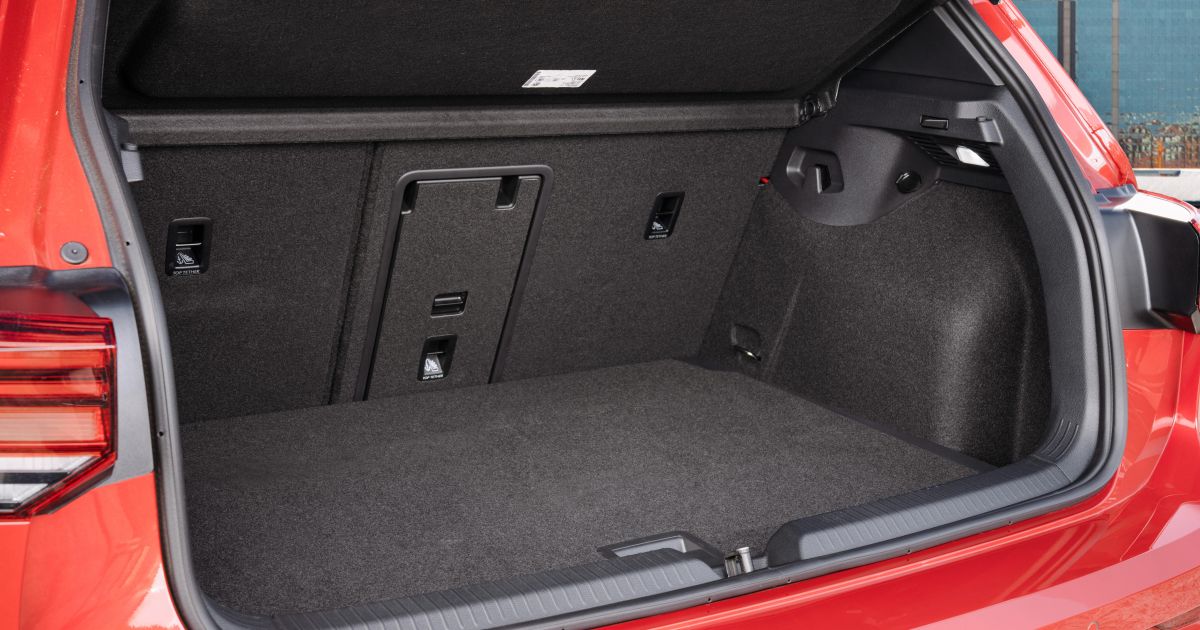
GTI
| Dimensions | Volkswagen Golf 110TSI Style |
|---|---|
| Length | 4282mm |
| Width | 1789mm |
| Height | 1480mm |
| Wheelbase | 2631mm |
| Cargo capacity | 374-1230 litres |
To see how the Volkswagen Golf lines up against the competition, check out our comparison tool
What’s under the bonnet?
The core Golf Mk8.5 range in Australia carries over the 1.4-litre TSI four-cylinder turbo-petrol engine from the Mk8, teamed with an eight-speed automatic transmission supplied by Japan’s Aisin.
| Specifications | Volkswagen Golf 110TSI Style |
|---|---|
| Engine | 1.4L 4cyl turbo-petrol |
| Power | 110kW at 6000rpm |
| Torque | 250Nm at 1500-4000rpm |
| Transmission | 8-speed auto |
| Drive type | Front-wheel drive |
| Weight | 1345kg – tare |
| Fuel economy (claimed) | 6.3L/100km |
| Fuel economy (as tested) | 7.3L/100km |
| Fuel tank capacity | 50 litres |
| Fuel requirement | 95-octane premium unleaded |
| CO2 emissions | 143g/km |
| Emissions standard | Euro 6 |
While there are a number of newer, more efficient powertrains available in the Golf overseas, Australia is lumped with other markets that haven’t yet fully moved to the Euro 6 emissions standard and aren’t given priority access to electrified models.
The equivalent powertrain in the European and UK lineups is the 1.5 eTSI, which is effectively the newer version of the 1.4 under the bonnet of local models. Equipped with a 48V mild-hybrid and cylinder-on-demand technologies, the Golf eTSI can run as a two-cylinder under low engine loads and shut off the engine while coasting or coming to a stop.
Even under the more stringent WLTP test regime in Europe, the equivalent Golf 1.5 eTSI with 110kW quotes the equivalent of 5.1L/100km on the combined cycle, which is more than 1.0L/100km less than the engine used locally – mind you, Australian fuel figures are also determined by the more lenient and outdated NEDC test cycle.
Beyond that, you also have the Golf eHybrid, which is VW-speak for PHEV. Using the aforementioned 1.5 TSI as its base, the standard eHybrid makes 150kW, while the GTE version makes 200kW. Both can drive over 130km on electric power alone.
To see how the Volkswagen Golf lines up against the competition, check out our comparison tool
How does the Volkswagen Golf drive?
Our local launch drive of the updated Golf took in a return trip from Marysville in Victoria’s far east, back to Melbourne. We spent most of our time in the Style, but also piloted the R-Line with the same driveline.
Having spent day one of the Australian media launch in the excellent new GTI, the Style’s character is quite distinct from the Golf hot hatch, even there are a number of similarities.
The 1.4 TSI has been in service in the Golf for a decade or so in Australia, where it was offered in various states of tune in the Mk7 and Mk7.5 generations, though the Mk8 reverted from VW’s usual dual-clutch Direct-Shift Gearbox (DSG) auto to an eight-speed torque converter automatic supplied by Aisin.
Primarily, this driveline is supplied to Australia due to our nation’s hitherto lax emissions legislation. Despite the upcoming New Vehicle Efficiency Standard mandating fleet-average emissions targets to encourage the import of more efficient and electrified vehicles, Australia’s baseline emissions standard remains Euro 5 – which was succeeded by Euro 6 in Europe way back in 2014.
It means if you’re a Mk6 or Mk7 owner and have become accustomed to the traits of Volkswagen’s DSG, irrespective of their quirks, the Mk8 and 8.5 have a distinctly different character behind the wheel.
Off the line response is naturally much sharper and more natural compared to a dual-clutch transmission, but really other than that the Mk8.5’s driveline feels like something of a sideways or even backwards step.
Despite their low-speed niggles, Volkswagen DSGs – even the dry-clutch ones in normal Golfs – offer incredibly sharp and snappy performance on the move, and have a distinct feeling of rolling athleticism and a different personality to torque converter ‘boxes offered by largely Asian rivals.
That sort of disappears with this latest Golf. Yes the 1.4 TSI is super torquey and punches above its weight in terms of shifting the Golf’s 1.3-tonne mass, but it’s not a particularly engaging or pleasurable drivetrain to live with.
Shifts from first into second can feel a little elastic, and at times the auto really slurs through ratios to the point it almost makes the engine sound like it’s attached to a continuously variable transmission (or CVT). The steps between ratios aren’t super sharp or distinct, and at times it can feel like it has one or two too many ratios to play with.
In normal driving it’s less of an issue, but when you want to dial things up a little – which you may be tempted to do in an R-Line, for example, it starts to feel a little out of its depth.
Even after flicking the transmission into ‘S’, the eight-speed auto struggles to accurately gauge when you want it to downshift. Often there’s a one- or two-second pause before it flicks down a cog or two to put you in the torque band. As someone who is used to the sharp response from my Mk7.5 GTI DSG, it grates on me quite a bit personally.
-
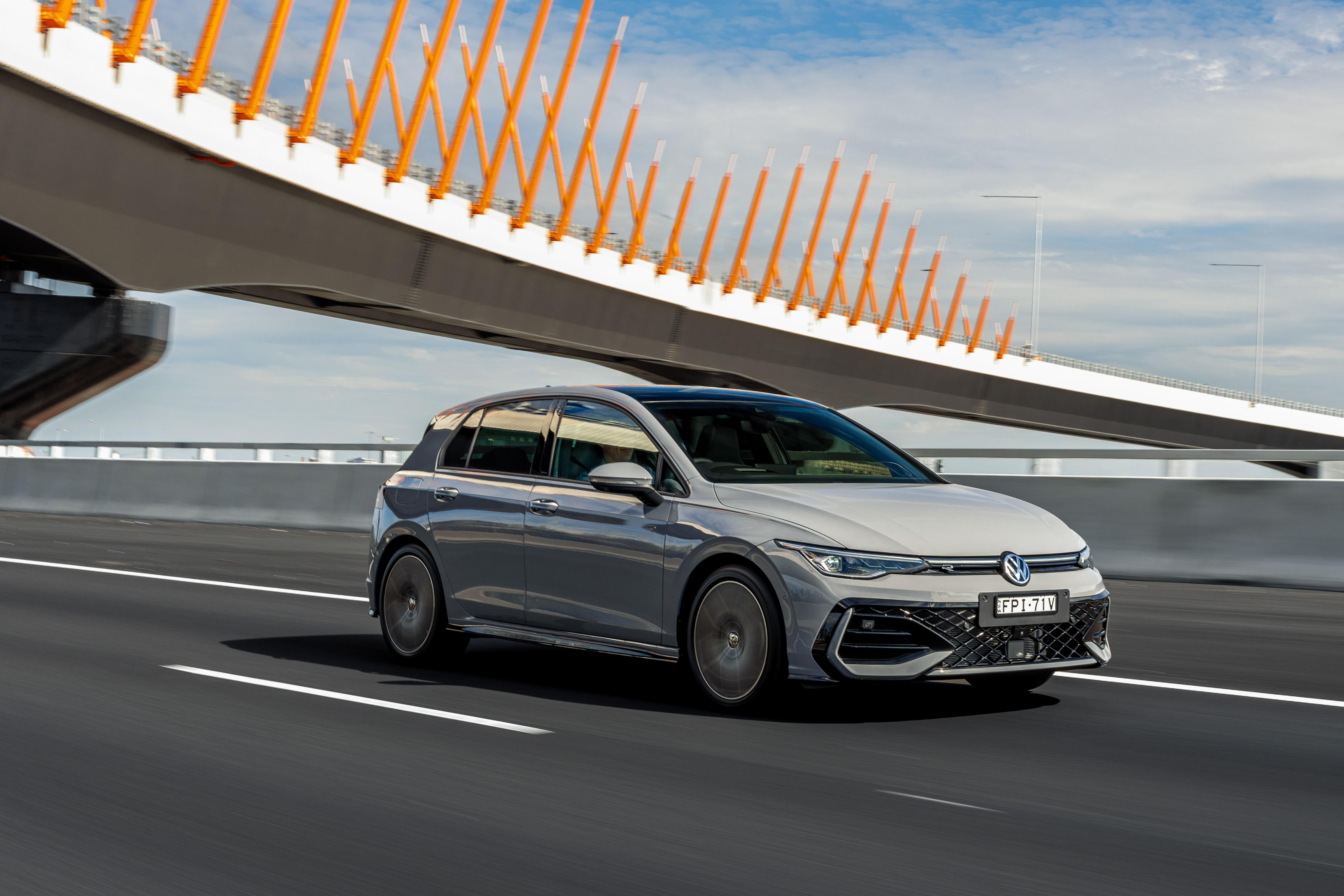
R-Line
It’s really quite a shame given the rest of the Golf’s on-road traits are, put simply, excellent. The Style rides beautifully on its standard 18-inch alloys, striking a near-perfect balance between comfort and dynamism.
Steering is on the lighter side but offers good feel and feedback to communicate what’s happening beneath you, while the keen chassis means even the standard Golf corners with verve and precision.
Piloting the Style through Victoria’s famous Black Spur was a surprising revelation that showcased the car’s cornering abilities, though it also exacerbated my gripes with the drivetrain.
The R-Line adds sports suspension and a ‘Progressive’ variable steering rack, making it feel something like a ‘GTI-Lite’, but seems even more let down by an uninspiring driveline.
The R-Line feels that little more hunkered down and purposeful, and the addition of selectable drive modes allows you to sharpen things up in one hit via the ‘Sport’ mode. It’s a shame a higher-performance engine and transmission combination wasn’t applied here, because it feels like it’s missing something to go with the sportier look.
-
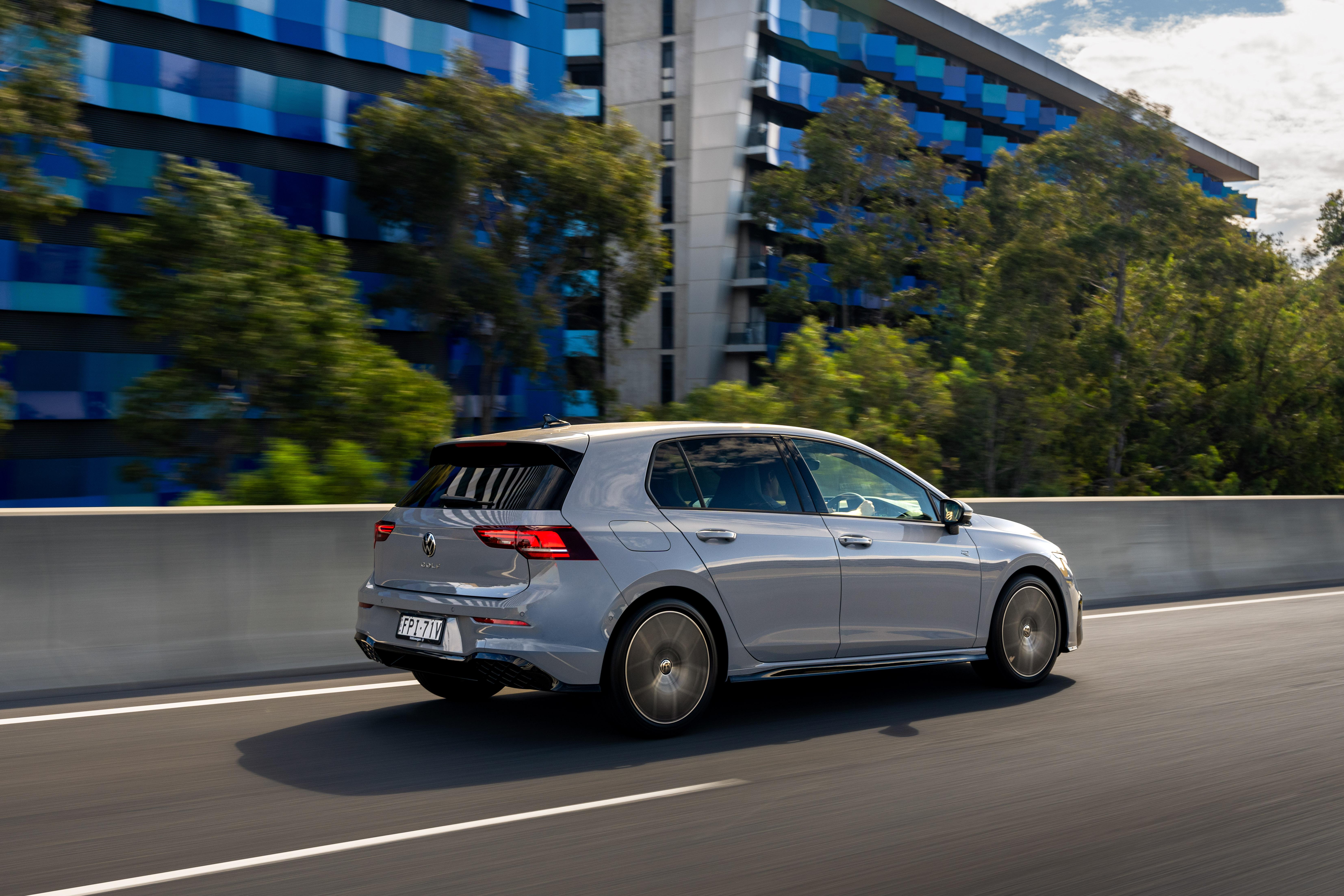
R-Line
The R-Line also rides a little more firmly than the Style, as you’d expect, making it less comfortable and refined overall, and therefore less suitable as a daily than the Style.
Really, the Style feels more like what a standard Golf should feel like, in that it’s a little posh and luxurious without overtly presenting so. I’d also argue the Style is a little quieter in the cabin, and the softer controls make it nicer to pilot in everyday scenarios.
We didn’t get to try the base Golf Life on its smaller wheels, but it shouldn’t be all that different to the Style, apart from its more economy-class interior trimmings.
Otherwise, the suite of IQ Drive assistance and safety functions do a great job of keeping you out of trouble on the road, with VW’s intuitive Travel Assist semi-autonomous cruise control system remaining one of the best in the business.
The way it so deftly keeps you centred in your lane without feeling too intrusive, while also keeping a safe gap from the vehicle in front, makes this tech a benchmark for systems of its type.
-
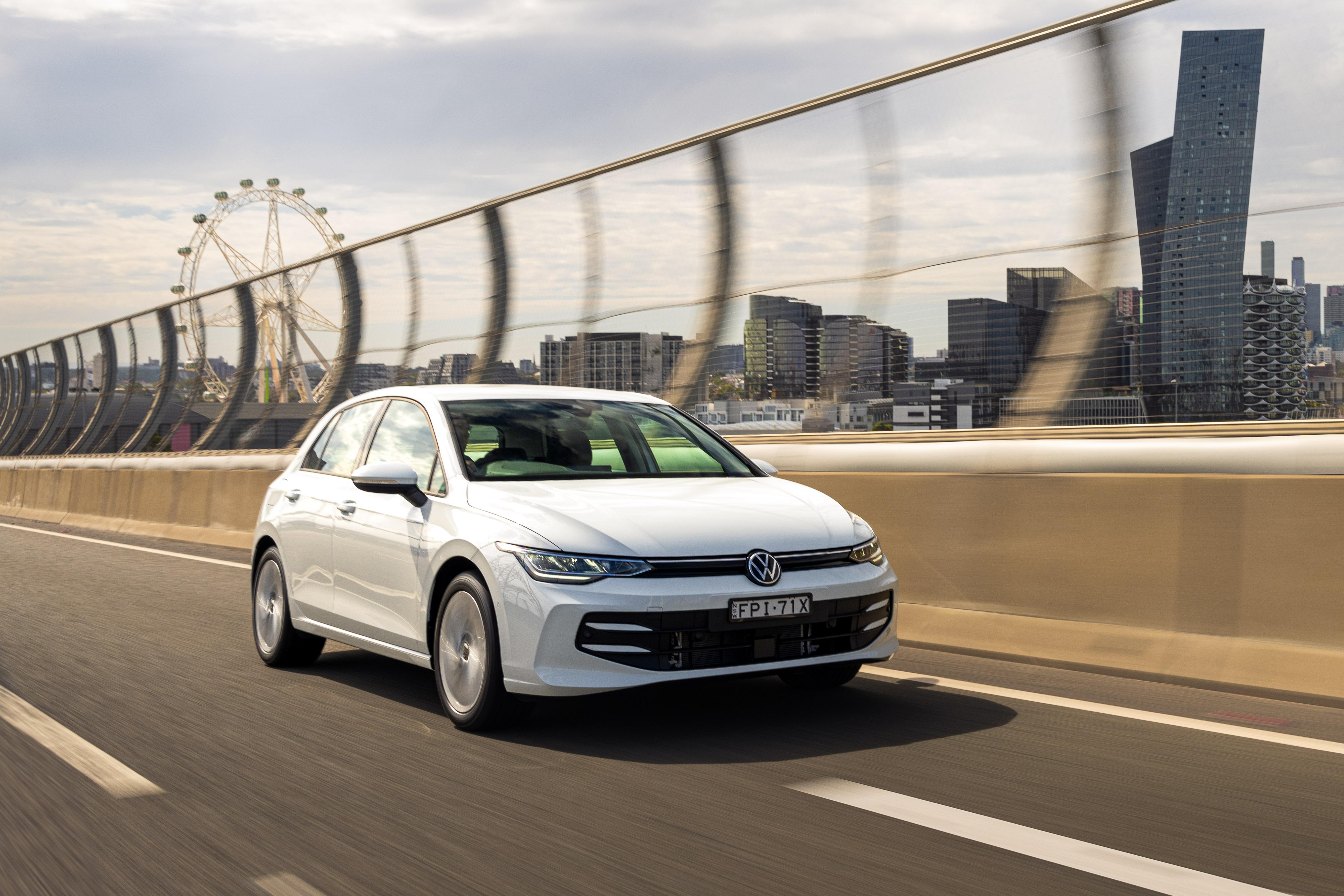
LIfe
Also standard are helpful features like blind-spot monitoring and rear cross-traffic assist, which supplement the Golf’s already very good outward visibility. The former also brakes to avoid collisions in reverse.
Speaking of parking manoeuvres, the regular Golf range comes as standard with a semi-autonomous Park Assist function, which will control steering to help guide you into both parallel and perpendicular parking bays. Sadly, Park Assist Plus, which adds automated assistance for the accelerator, brake and gear selection, is reserved for the GTI hot hatch.
To see how the Volkswagen Golf lines up against the competition, check out our comparison tool
What do you get?
The Style sits above the entry-level Life but below the R-Line, which tops the core Golf range.
2025 Volkswagen Golf Life equipment equipment highlights:
- 17-inch Nottingham alloy wheels
- LED headlights – reflector type
- Light Assist – auto high-beam
- Power-folding exterior mirrors
- Keyless access incl. alarm
- 10.25-inch Digital Cockpit Pro
- 10.3-inch touchscreen infotainment
- 6-speaker audio
- DAB+ radio
- Wireless App-Connect
- Apple CarPlay
- Android Auto
- 5yr GoConnect subscription
- Climate control
- Leather multifunction steering wheel
- Wireless phone charger
- 10-colour ambient lighting
Golf Style adds:
- 18-inch Catania alloy wheels
- LED Plus headlights – projector type
- Rear privacy glass
- 12.9-inch navigation system
- IDA voice assistant
- 7-speaker audio – incl. centre
- Tri-zone climate control
- ArtVelours microfleece upholstery
- ErgoActive 14-way electric driver’s seat
- Driver memory function – 2-position
- Driver massage function
- 30-colour ambient lighting
Golf R-Line adds:
- 18-inch Leeds alloy wheels
- R-line exterior, interior styling
- Driving profile selection
- Front sports seats
- Driver memory function – 3-position
- Vienna leather upholstery
- Heated, ventilated front seats
- Heated steering wheel
- Progressive steering – variable ratio
To see how the Volkswagen Golf lines up against the competition, check out our comparison tool
Options
A handful of options and packages are available across the lineup.
Sound and Vision Package: $2000 (Style, R-Line, GTI)
- 12-channel Harman Kardon premium audio
- Area View surround cameras
- Head-up display
Vienna Leather Package: $3900 (GTI)
- Vienna leather upholstery
- Power-adjustable driver’s seat
- Heated, ventilated front seats
- 12-channel Harman Kardon premium audio
- Head-up display
Standalone options:
- Panoramic sunroof: $1900
- Metallic paint: $800 (Life, Style, R-Line)
- Premium metallic paint: $300 (GTI)
To see how the Volkswagen Golf lines up against the competition, check out our comparison tool
Is the Volkswagen Golf safe?
The Volkswagen Golf has a five-star ANCAP safety rating based on 2019 Euro NCAP testing.
| Category | Score |
|---|---|
| Adult occupant protection | 95 per cent |
| Child occupant protection | 89 per cent |
| Vulnerable road user protection | 76 per cent |
| Safety assist | 80 per cent |
Standard safety equipment includes:
- 9 airbags incl. front-centre airbag
- Autonomous emergency braking (AEB)
- Pedestrian detection
- Cyclist detection
- Adaptive cruise control with stop/go
- Blind-spot monitoring
- Cross-traffic alert – front, rear
- Driver fatigue monitoring
- Emergency Assist
- Multi-collision brake
- Lane Assist
- Lane departure warning
- Lane-keep assist
- Park Assist
- Steering assistance
- Parking sensors – front, rear
- Reversing camera
- Safe exit warning
- Travel Assist
- Adaptive cruise control
- Adaptive lane guidance – centring
Golf GTI adds:
- Park Assist Plus
- Steering assistance
- Gear selection assistance
- Accelerator, brake assistance
Golf R adds:
- Area View surround cameras
To see how the Volkswagen Golf lines up against the competition, check out our comparison tool
How much does the Volkswagen Golf cost to run?
As with the wider range, the Golf is covered by Volkswagen Australia’s five-year, unlimited-kilometre warranty.
| Servicing and Warranty | Volkswagen Golf 110TSI Style |
|---|---|
| Warranty | 5 years, unlimited kilometres |
| Roadside assistance | 12 months – standard 12 months – service activated |
| Service intervals | 12 months or 15,000 kilometres |
| Capped-price servicing | 5-year Care Plan |
| Total capped-price service cost | $2950 – Golf Mk8 |
To see how the Volkswagen Golf lines up against the competition, check out our comparison tool
CarExpert’s Take on the Volkswagen Golf
The introduction of the Style grade sees the non-performance Golf return to form.
Standard versions of the Golf were meant to feel quite plush and upmarket, even with their most basic trimmings, and while the initial Mk8 range arguably failed to deliver on some fronts, this revised lineup does a much more convincing job of being a premi-ish ‘People’s Car’.
Fans of the old Golf Highline in particular finally have a worthy successor, and it sits in a price band that remains attainable and competitive with its rivals, even if you have to spend up for the Sound and Vision Package to get a head-up display and premium audio.
The Style also drives like a Golf should, drawing upon capable underpinnings shared with premium-badged products to provide a drive experience that is generally more comfortable and refined than key rivals from the likes of Toyota, Hyundai and Mazda. It’s also nice to see improvements that are direct responses to customer feedback.
But… that’s not to say there aren’t still things that can be improved upon to really make the Golf a winner. It’s missing engine options and tech features available in other markets, and despite a more conventional transmission it’s not really any cheaper to service than it has been previously.
For me, the drivetrain is a sticking point – Australians simply aren’t getting the best of what the Golf has to offer. While the venerable 1.4 TSI is a great little engine, it’s hamstrung by a dopey and uninspiring eight-speed automatic that lacks the crispness and decisiveness of VW’s signature DSG shifters, even if it’s a little quicker off the line.
No mild-hybrid or plug-in hybrid options for Australia also seems to be a misstep given increasing demand for more efficient and electrified drivetrains in Australia. Tangible efficiency gains from the MHEV tech as well as 100km-plus of EV range in the PHEVs would give the Golf a real point of difference in the market, and their absence seems even more of a shame when other brands under the VW Group umbrella have access locally.
We’d also like to see the more premium features and tech that’s available overseas offered locally, like Matrix LED headlights (given you can get them on a Polo), an extended range of paint options (including two-tone), the lighter Mistral Grey interior for the Style, as well as Park Assist Plus. All of these could turn the Golf into a properly premium compact, even if they were only available as options.
Regardless, the Volkswagen Golf remains a strong contender in the small car segment. If you’re not rushing to get a hybrid or EV, there’s still plenty to like about this understated German hatchback.
Interested in buying a Volkswagen Golf? Get in touch with one of CarExpert’s trusted dealers here
Click the images for the full gallery

